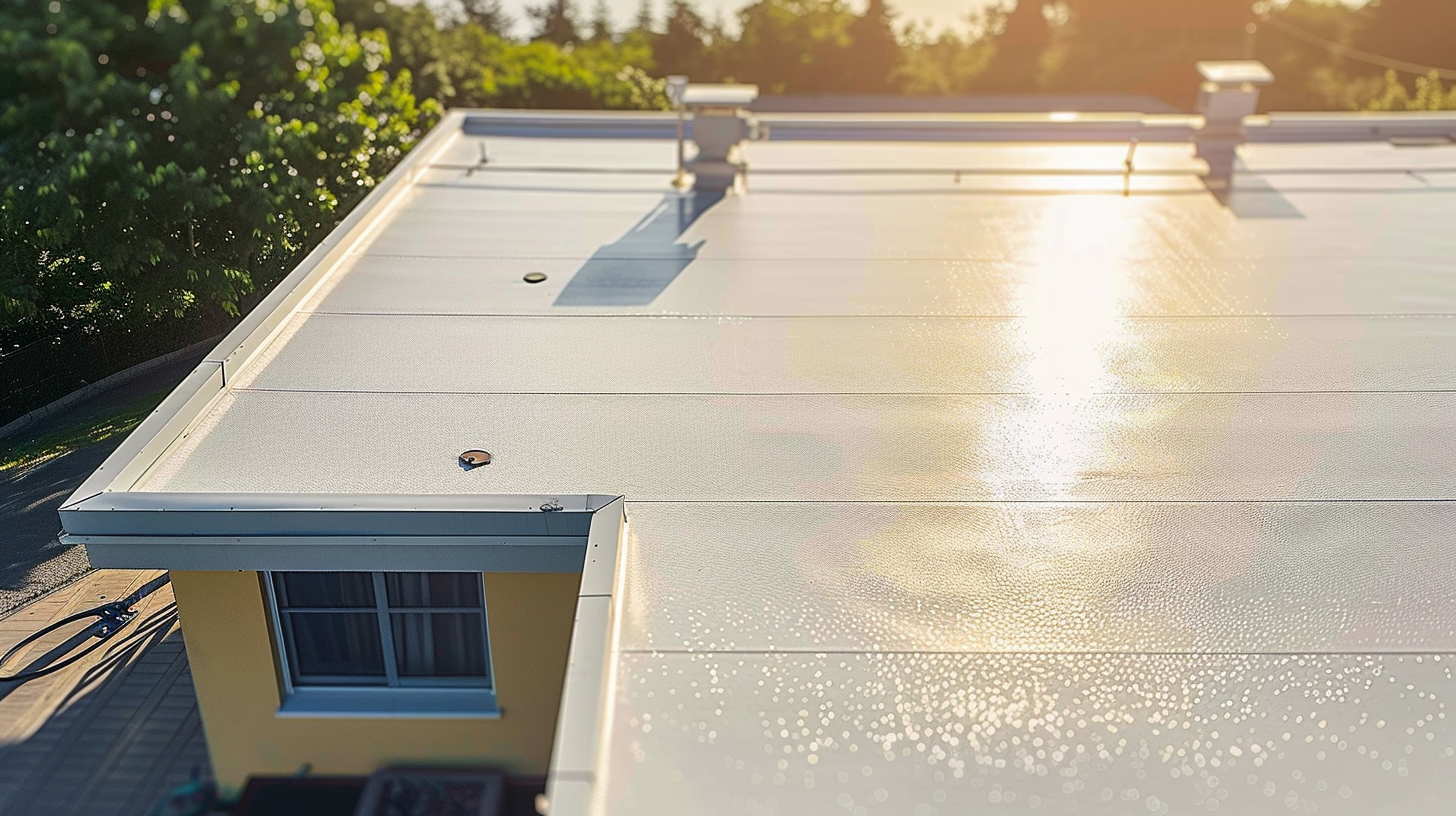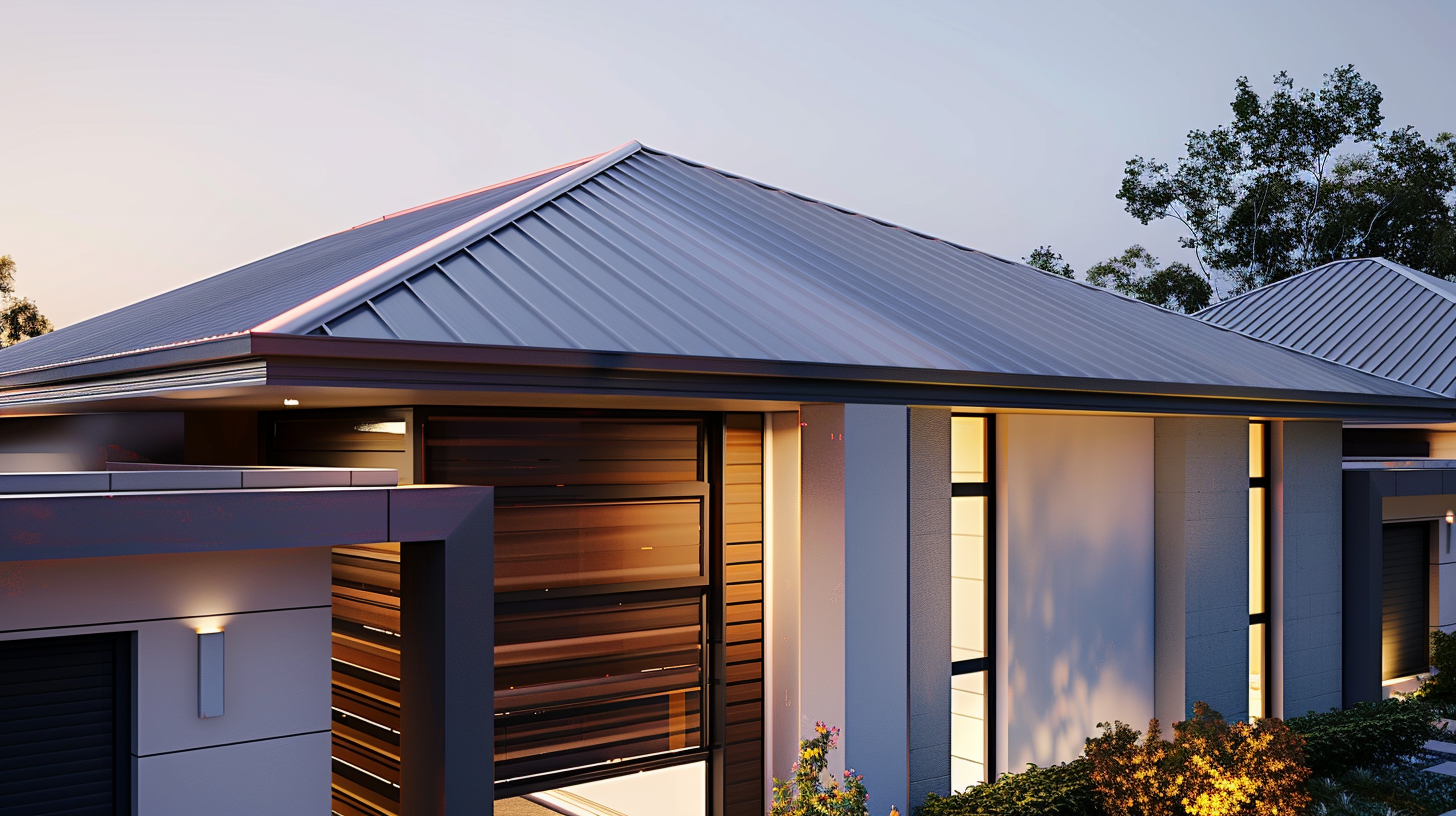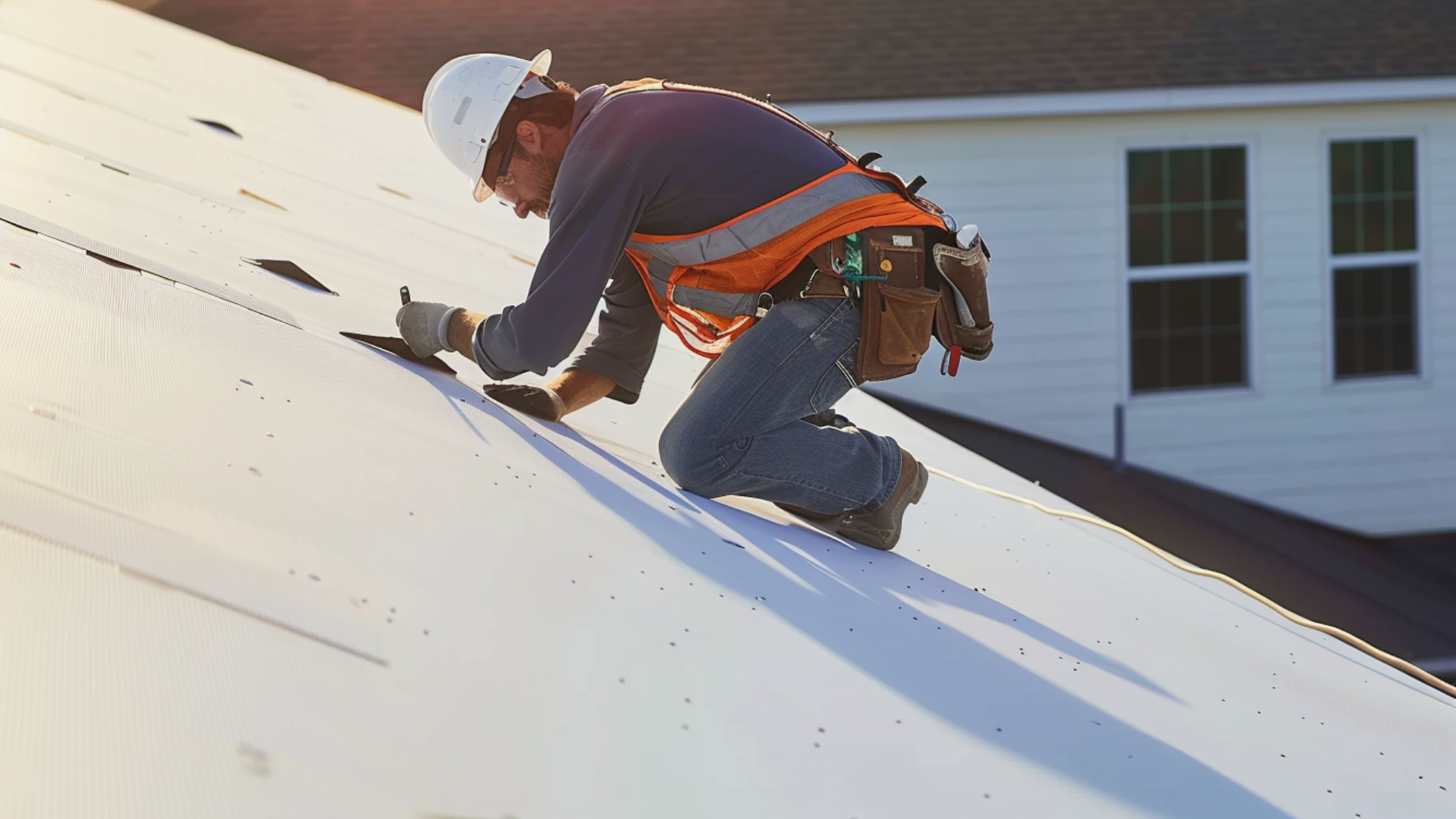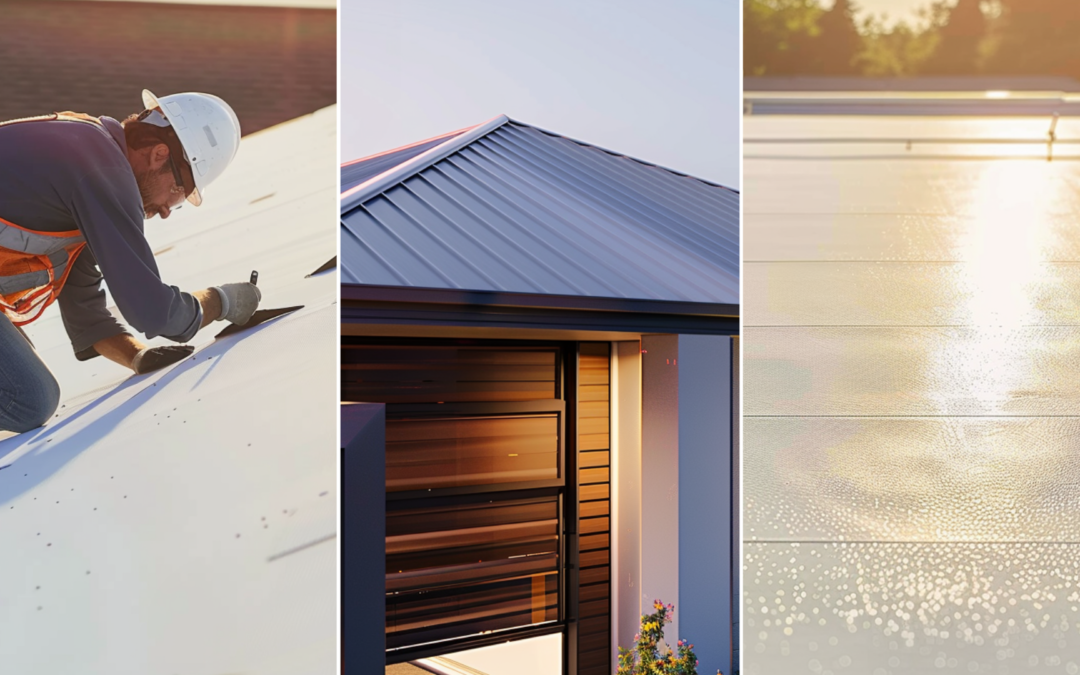Definition of Thermoplastic Roofing
Thermoplastic roofing is a type of roofing system that is gaining popularity in the construction industry due to its numerous benefits and advantages. It is a flexible and durable roofing material made from thermoplastic compounds. Unlike traditional
roofing materials, thermoplastic roofing can be easily molded and shaped, making it suitable for different roofs and structures. It offers excellent resistance against harsh weather conditions, including extreme temperatures, strong winds, UV radiation, and fire. Thermoplastic roofing is highly resistant to chemicals and pollutants, making it an ideal choice for industrial and commercial buildings. It is also an environmentally friendly option as it is recyclable and has a long lifespan, reducing the need for frequent replacement.
Benefits of Choosing Thermoplastic Roofing
Thermoplastic roofing offers several benefits for those considering this option. One key advantage is its outstanding weather resistance against a range of elements. Thermoplastic roofs are highly resistant to chemicals, UV rays, ozone, algae, and storms, making them highly durable and long-lasting. Additionally, thermoplastic roofing is known for its energy efficiency. These roofs have high reflectivity, reflecting a significant amount of sunlight and reducing the heat entering the building. This leads to improved heat regulation and can result in lower energy costs for cooling.
Growing Popularity in the Roofing Industry
Thermoplastic roofing has witnessed a rapidly growing popularity in the roofing industry. As an advanced roofing solution, thermoplastic roofing offers numerous benefits and advantages to residential and commercial customers. Thermoplastic roofing has become a preferred choice for many builders and homeowners due to its durability, flexibility, and low maintenance requirements. Additionally, its resistance to extreme weather conditions, UV radiation, and chemical exposure further contributes to its rising popularity. The ease of installation, cost-effectiveness, and energy efficiency of thermoplastic roofing has made it an attractive option for those seeking a long-lasting and eco-friendly roofing solution. Moreover, the versatility of thermoplastic roofing materials allows for a wide range of color choices, ensuring that customers can find a roofing option that suits their aesthetic preferences. Considering these advantages, it is no surprise that thermoplastic roofing has gained significant traction in the roofing industry and is expected to continue its upward trend in popularity.

Thermoplastic Roofing - Types of Thermoplastic Roofing Materials - Sky Roofing Construction & Remodeling
Types of Thermoplastic Roofing Materials
Thermoplastic roofing materials have gained popularity in commercial roofing due to their durability, flexibility, and cost-effectiveness. They offer significant advantages over traditional roofing materials, making them an attractive option for commercial buildings. From polyvinyl chloride (PVC) to thermoplastic olefin (TPO), each material contributes to superior performance, weather resistance, and ease of installation. Whether you are a building owner looking for a durable and efficient roofing solution, understanding the various thermoplastic roofing materials can help you make an informed decision.
Thermoplastic Polyolefin (TPO)
Thermoplastic Polyolefin (TPO) roofing is a type of roofing material composed of polypropylene and ethylene-propylene rubber. TPO roofing is heat-welded at the seams during installation, creating a solid and durable bond. One of the critical benefits of TPO roofing is its resistance to cracking and material failure, making it a long-lasting and low-maintenance option for roofing projects. Additionally, TPO roofing has excellent roof properties, meaning it helps reflect sunlight and reduce heat absorption, which can lead to energy savings. Another advantage of TPO roofing is its compatibility with HVAC systems, allowing for efficient ventilation and temperature control.
Polyvinyl chloride (PVC) roofing is a type of thermoplastic roofing that offers various benefits and advantages. PVC roofing has properties like durability, impact resistance, and excellent UV resistance, making it ideal for harsh weather conditions. PVC membranes for roofing are made using a fusion welding process, which involves heat bonding the sheets together. These membranes combine PVC resin with plasticizers, stabilizers, and other additives. The manufacturing process includes blending the ingredients, extruding the mixture into sheets, and adding reinforcement for strength. The resulting PVC roofing membranes are lightweight, flexible, and easy to install. They offer ease of maintenance and energy efficiency and are resistant to chemicals and fire. However, there are also some disadvantages to PVC roofing, such as potential environmental concerns related to the production and disposal of PVC and the higher cost compared to other roofing materials.
Ethylene-Propylene Rubber (EPDM)
Ethylene-propylene rubber (EPDM) is widely used in thermoplastic roofing, particularly in conjunction with TPO (thermoplastic olefin) systems incorporating white EPDM flashing details. EPDM is an ideal choice for rubber roof applications because it is known for its durability, weather resistance, and flexibility. It withstands extreme temperatures, UV radiation, and various weather conditions without deteriorating or cracking. EPDM is commonly used in flat and low-slope rubber roofs and in installing flashings, seams, and roof penetrations. Its versatility and ease of installation through heat welding or adhesive technologies make it a preferred option for thermoplastic roofing. With EPDM’s features and the benefits of TPO systems, such as energy efficiency and environmental sustainability, these combined technologies offer long-lasting, reliable, and cost-effective solutions for various commercial roofing needs.

Thermoplastic Roofing - Characteristics of Thermoplastic Roofing Membranes - Sky Roofing Construction & Remodeling
Characteristics of Thermoplastic Roofing Membranes
Thermoplastic roofing membranes offer significant benefits, making them an excellent choice for commercial properties and residential roofs. These durable, weather-resistant materials are made from a blend of polymers that can be repeatedly melted and reformed without losing their properties. One key characteristic of thermoplastic single-ply membranes is their exceptional UV resistance, effectively preventing sun damage. Additionally, these membranes exhibit excellent flexibility, accommodating the natural expansion and contraction of a building without cracking or splitting. Known for their high tensile strength, thermoplastic single-ply membranes ensure long-lasting performance and protection against harsh weather conditions. They are also highly resistant to chemicals, withstanding exposure to industrial pollutants and other harmful substances without deterioration. With these features, thermoplastic single-ply membranes provide a reliable and durable roofing solution for any project.
Energy Efficiency and Reflectivity
TPO roofing, known for its energy efficiency and reflective properties, offers numerous benefits to those seeking a cost-effective cooling solution. The thermoplastic material reflects heat from the sun into the atmosphere rather than absorbing it into the building, resulting in significant savings on cooling costs during the summer months. The reflective surface of TPO roofing surpasses the Energy Star requirements set by the EPA and is recognized by the Cool Roof Rating Council. These features make TPO roofing an excellent choice for those concerned about energy usage, providing a roofing solution that effectively reflects heat, ultimately leading to a cooler and more comfortable living or working environment.
Resistance to Mold Growth
One of the critical advantages of thermoplastic roofing is its resistance to mold growth, a common problem in many roofing systems. Several strategies can be implemented to prevent mold growth on thermoplastic roofs. Maintaining low humidity levels is crucial, as mold thrives in moist environments. Improving ventilation can prevent stagnant air pockets that promote mold growth. Fixing leaks and moisture issues is essential since water infiltration provides ideal conditions for mold. Using mold-resistant materials, such as thermoplastic roof membranes, helps prevent mold growth. Regularly cleaning and inspecting areas prone to mold ensures any potential issues are addressed promptly. By implementing these strategies, thermoplastic roofing offers a durable and low-maintenance solution that is resistant to mold growth.
Thermal Expansions and Contractions
Thermal expansions and contractions occur when materials change in size with temperature fluctuations. Typically, materials expand with increased temperatures and contract with decreased temperatures. Understanding this relationship between temperature and dimensional changes is essential for predicting how materials react to heat. In everyday life, we see examples of this phenomenon: metal bridges expand in hot weather, potentially leading to structural issues, while rubber bands contract in cold temperatures, becoming tighter and less flexible. These examples illustrate the importance of considering thermal expansions and contractions in various applications, such as thermoplastic roofing and roof insulation.
Thermoplastic roofing, or TPO roofing, offers exceptional durability and longevity. It is resistant to mold growth, dirt accumulation, and water damage, making it ideal for areas prone to moisture or debris. Additionally, TPO roofing exhibits high impact resistance, resistance to tears, and puncture resistance, ensuring it can withstand harsh weather conditions and potential damage. Proper maintenance is crucial for maximizing its longevity; regular inspections, cleaning, and repairs can prevent issues from escalating. With its comprehensive resistance to mold, dirt, water damage, and tears, along with its impact and puncture resistance, TPO roofing provides a long-lasting solution for those seeking a durable, low-maintenance roofing option. Furthermore, TPO roofing has various color options, offering aesthetic flexibility to match building designs.

Thermoplastic Roofing - Installation Process for Thermoplastic Roofing Systems - Sky Roofing Construction & Remodeling
Installation Process for Thermoplastic Roofing Systems
Thermoplastic roofing systems are gaining popularity in the construction industry due to their numerous benefits. These roofing systems are known for their durability, weather resistance, and energy efficiency, potentially reducing roofing costs. Additionally, they are lightweight, flexible, and have a long lifespan. To fully enjoy these benefits, it is crucial to ensure proper installation by a roofing professional. The installation process for thermoplastic roofing systems involves several key steps:
- A roofing professional thoroughly inspects the existing roof, making any necessary repairs or preparations.
- The thermoplastic membrane is cut and rolled out onto the roof surface, adhered to using heat, and seams are welded together.
- The edges and flashings are secured, and the roof is inspected to ensure a watertight and visually appealing finish.
By following these installation steps, property owners can be confident in the longevity and performance of their thermoplastic roofing systems.
Preparation of the Roof Surface
Proper preparation of the roof surface is crucial to ensure a successful thermoplastic roofing installation. This involves several necessary steps. Firstly, a roofing contractor must thoroughly clean and inspect the existing roofing materials to identify potential issues or damage that may affect the new installation. Next, any debris or loose fragments must be removed entirely from the roof to create a clean and stable surface for the TPO roof installation. It is essential to ensure the surface is smooth and dry before proceeding. This will contribute to the longevity and effectiveness of the thermoplastic roofing system. To achieve the best results, working with an experienced roofing contractor with the necessary knowledge and skills to handle the installation process properly is highly recommended. Additionally, using high-quality TPO roofing material is crucial to ensure the durability and performance of the thermoplastic roofing system. By following these necessary steps and working with roofing professionals, one can enjoy the numerous benefits and advantages of thermoplastic roofing.
Application of Bonding Adhesives or Heat Welding
Two standard methods are used to maintain and repair a TPO roof: bonding adhesives or heat welding. Both methods offer their benefits and advantages. Bonding adhesives are applied to the seams of the TPO roof, creating a strong seam and durable seal. This method is relatively simple and cost-effective, making it a popular choice for repairing minor issues with roof materials. On the other hand, heat welding involves:
- A specialized tool is used to melt the TPO membrane at the seams.
- Fusing them.
- Creating seamless application times.
Heat welding is known for its long-lasting results and superior strength in resistance.
Lorem ipsum dolor sit amet, consectetur adipiscing elit, sed do eiusmod tempor incididunt ut labore et dolore magna aliqua. Ut enim ad minim veniam, quis nostrud exercitation ullamco laboris nisi ut aliquip ex ea commodo consequat. Duis aute irure dolor in reprehenderit in voluptate velit esse cillum dolore eu fugiat nulla pariatur. Excepteur sint occaecat cupidatat non proident, sunt in culpa qui officia deserunt mollit anim id est laborum. Lorem ipsum dolor sit amet, consectetur adipiscing elit, sed do eiusmod tempor incididunt ut labore et dolore magna aliqua. Ut enim ad minim veniam, quis nostrud exercitation ullamco laboris nisi ut aliquip ex ea commodo consequat. Duis aute irure dolor in reprehenderit in voluptate velit esse cillum dolore eu fugiat nulla pariatur. Excepteur sint occaecat cupidatat non
Sky Roofing Construction & Remodeling: Your Partner for Thermoplastic Roofing Success
Explore the advantages of thermoplastic roofing and its various applications in commercial and residential settings. Whether you’re looking to enhance energy efficiency, durability, or aesthetic appeal, our team at Sky Roofing Construction & Remodeling (https://skyroofingconstructiontx.com) is ready to assist you. Schedule a consultation today by calling (210) 942-9797 to learn more about our expert installation services and find the perfect roofing solution for your property.




